- Home
- Loren D. Estleman
The Adventure of the Plated Spoon and Other Tales of Sherlock Holmes
The Adventure of the Plated Spoon and Other Tales of Sherlock Holmes Read online
THE ADVENTURE OF
THE
PLATED SPOON
AND OTHER TALES OF
SHERLOCK HOLMES
Edited by
LOREN D. ESTLEMAN
As always, this book is dedicated to the memory of Sir Arthur Conan Doyle; with additional thanks to Ormond G. Smith and John Russell Coryell, creators of Nick Carter, the American Sherlock Holmes, and to Frederick Van Rensselaer Dey, who wrote more Carter stories than any other author.
ALWAYS HOLMES
We seek him here, we seek him there,
Those Frenchies seek him everywhere.
Is he in heaven?—Is he in hell?
That demmed, elusive Pimpernel.
Thus, in the Baroness Orczy’s timeless The Scarlet Pimpernel, does the foppish Percy Blakeney—altogether a more entertaining character than his alter ego, the swashbuckling Pimpernel—sum up the spectral character of the enemy of Republican France under the Terror. He is, it seems, ubiquitous, yet invisible.
The first adjective sums up another great figure of literature, while the second most certainly does not. Sherlock Holmes is, indeed, everywhere, and as obvious to all as the most minute clues were to him.
I’ve said elsewhere that Holmes shares a special place in our language with Frankenstein and Dr. Jekyll and Mr. Hyde, as a shortcut to explanation. People who have never read the classic novels written by Mary Shelley and Robert Louis Stevenson, and who have managed to avoid their innumerable adaptations to film and radio, know what it means to “create a Frankenstein,” and recognize “a Jekyll and Hyde character” when they see one; likewise, people ignorant of the novels and stories of Sir Arthur Conan Doyle—and their innumerable adaptations to film and radio—are aware of what’s intended when one party calls another “Sherlock.” Depending upon the context, the second party has either been complimented upon his perspicacity or made the butt of withering sarcasm.
Slow to catch on in the beginning, the world’s first consulting detective and his amanuensis, Dr. John H. Watson, clicked with their third outing, “A Scandal in Bohemia,” assuring that brand-new enterprise known as The Strand Magazine six decades in the stalls and immortality in legend. From the moment Holmes laid eyes upon the cunning Irene Adler in the July 1891 issue until thirty-six years later, when he reasoned out the eccentric behavior of Sir Robert Norberton and his sister, Lady Beatrice Falder, in “The Adventure of Shoscombe Old Place,” the detecting partners were a public fixture, having made the leap meanwhile from printed page to early motion-picture screen—and from the shadowy fluff of imagination to the solid marble of myth.
I speak not of the connoisseurs: the variegated buffs, scholars, and debaters who have flayed and reassembled Holmes and Watson in learned papers and at lecterns in both hemispheres, written straight-faced “obituaries” of them both, and attempted, with all the grim reasoning of a historian determined to clear the name of Richard III, to expunge the mystery from the good doctor’s peripatetic battle wound (“Leg? Shoulder? Which was it, man?”). I speak instead of the greater population who can’t walk a hundred yards in any direction without tripping over some reference to Holmes and Watson.
In their own time, their distinctive profiles hung from staples outside public-houses, decorated snuff boxes, sold candy, crackers, cigarettes, men’s hosiery, razors, and root beer. Nearly a century before “product placement,” the culture we now call Madison Avenue had jumped the gun by exploiting fiction to sell widgets. (The practice continues to this day: although just what Mycroft’s kid brother has to do with housing development in the American suburbs is one for “Sherlock Homes.”)
Where fame leads, satire follows. Holmes and Watson were swiftly lampooned by Conan Doyle’s (perhaps) jealous colleagues. Maurice Leblanc’s “Holmlock Shears” (who bungles an attempt to nab master criminal Arsene Lupin) may have been the first, appearing even as eager readers awaited the next Holmes story by Conan Doyle, but it was by no means the last. Since then, we’ve had Schlock Homes, Solar Pons, Basil of Baker Street (a mouse cohabiting at 221B), and hundreds of others, including a gaggle of Doorlocks, Hemlocks, Sheerlucks, Hardlucks, Dumblucks—and six delirious minutes with Daffy Duck, complete with deerstalker and curve-stemmed pipe (with Porky Pig’s Watson at his side), hot on the trail of the “Shropshire Slasher” in the Looney Tunes classic, “Deduce, You Say!” (Daffy was a latecomer: In 1924’s Sherlock, Jr., Buster Keaton stepped literally from the audience up onto the silent screen to usurp the role of his hero—sixty years before Jeff Daniels escorted Mia Farrow into The Purple Rose of Cairo.)
Other imitations have been less than forthcoming about their source. As deep a footprint as Dame Agatha Christie made in the development of the detective story, her short fiction featuring Hercule Poirot relies suspiciously upon the Doylean template: a gifted amateur detective rejecting all but the most outré problems to challenge his intellect, while his retired British military housemate records the circumstances for the reading public. But then, I’ve written elsewhere about the debt Holmes owed to Edgar Allan Poe’s C. Auguste Dupin, so I point the finger with mercy.
I’ve been unable to determine just how Conan Doyle felt about all this apery, but by the time it reached crisis point, he’d gone sour on Holmes and declined to discuss him even in private. (When he finally relented, in an interview filmed shortly before his death in 1930, he spent much of his time denigrating Watson’s intelligence; writers are not immune to the influence of bastardizations of their own work. Poirot’s Captain Hastings, for instance, makes the good doctor look like Stephen Hawking.)
To call the original “pervasive” would be to state what must be obvious even to the bumbling Watson of silver-screen slander. Try to think of another figure, fictional or actual, from the Victorian period whose very name is as cutting-edge as this week’s hip-hop slang: When it looked as if my Sherlock Holmes vs. Dracula might be adapted to film (with Pierce Brosnan and Alexander Gudunov suggested as the leads), I had to plead with the screenwriter to strike “No shit, Sherlock!” from the Count’s dialogue.
The creators of Elementary and Sherlock, two currently popular TV series that bring our favorite detecting duo into the present century, were faced not only with the challenge of familiarizing Holmes with cell phones and DNA, but also of overcoming audience disbelief when characters learn his name and act as if they’d never heard it before; really, it’s like the entire case of a western saying, “Wyatt who?” A society with no awareness of Sherlock Holmes borders on The Twilight Zone. (The Godfather III suffered from the same dichotomy, with characters inhabiting an alternate 1970s in which “I’ll make him an offer he can’t refuse” has not been hardwired into the culture.)
In this climate, it’s difficult to picture Conan Doyle’s own failed experiments in christening his most famous creation. Not for him, he said later, to be so blatant as to resort to “Hawk” or “Sharps.” If the writer’s scrawl on a surviving scrap of paper is to be accepted as evidence, literature’s favorite duo would have been known—or more likely unknown—by names that resound like plug nickels. Fortunately—citing Conan Doyle again—he fondly recalled drubbing an opponent named Sherlock at cricket sometime in his past. Would Scarlett O’Hara be the vixen we remember had Margaret Mitchell stuck with “Pansy,” and The Great Gatsby as haunting had F. Scott Fitzgerald insisted upon Tremalchio in East Egg? Holmes said it best: “There is nothing so important as trifles.”
Ironically, we need not hear or read the name to recognize the man. The aquiline profile, the (non-canonical) fore-and-aft cap and curved-stem
pipe, the magnifying glass held close to the face are sufficient. As much as we owe this image to illustrators and actors, the relationship with the character in the stories is deeply rooted; those who approach them with preconceived notions are rarely shocked or disappointed. Sir Laurence Olivier’s performance in the classic film notwithstanding, ten readers of Emily Brontë’s Wuthering Heights will come away with ten different pictures of Heathcliff; and don’t let’s get started on whether Johnny Weissmuller or Buster Crabbe was the best Tarzan, or was Sean Connery or Daniel Craig the James Bond that Ian Fleming intended. Fists have flown over less. But surely everyone in the civilized world (and most in the undeveloped one) could pick Sherlock Holmes out of a police lineup. We can’t escape him, although why we should try is a mystery only he could clear up.
With apologies to Baroness Orczy and Percy Blakeney (and to the skills of the authors whose work follows this preface), I offer the following doggerel:
We see him here, we see him there,
Our world sees him everywhere.
He’s in our blood; he’s in our bones,
that grand illusive Sherlock Holmes.
—LOREN D. ESTLEMAN
CONTENTS
J.M. BARRIE
The Adventure of the Two Collaborators
ELLERY QUEEN
The Surgeon’s Kit
EDWARD D. HOCH
The Adventure of the Dying Ship
SAX ROHMER
Excerpt from The Insidious Dr. Fu-Manchu
SIR ARTHUR CONAN DOYLE
How Watson Learned the Trick
LAURIE R. KING
Two Shabby Figures
VINCENT STARRETT
The Adventure of the Unique Hamlet
ADRIAN CONAN DOYLE
The Adventure of the Red Widow
DEBORAH MORGAN
The Mysterious Case of the Urn of ASH; or, What
Would Sherlock Do?
JAMES O’KEEFE
The Adventure of the Deadly Interlude
LARRY D. SWEAZY
The Adventure of the Rounded Ocelot
LOREN D. ESTLEMAN
The Adventure of the Plated Spoon
THE ADVENTURE OF THE TWO COLLABORATORS
J.M. BARRIE
Sir Arthur Conan Doyle’s opinion of the rash of Holmes pastiches that appeared in his lifetime is largely unknown, but he singled out his friend J.M. Barrie’s “The Adventure of the Two Collaborators” as “the best of all the numerous parodies.” Barrie, of course, was the author of Peter Pan, a play whose hero is every bit as durable and iconic as Holmes himself, thanks to generations of children (and their parents). Considering the common practise of casting women as Pan onstage, Irene Adler’s talent for cross-dressing seems to have fascinated both authors.
In bringing to a close the adventures of my friend Sherlock Holmes I am perforce reminded that he never, save on the occasion which, as you will now hear, brought his singular career to an end, consented to act in any mystery which was concerned with persons who made a livelihood by their pen.
“I am not particular about the people I mix among for business purposes,” he would say, “but at literary characters I draw the line.”
We were in our rooms in Baker Street one evening. I was (I remember) by the centre table writing out “The Adventure of the Man Without a Cork Leg” (which had so puzzled the Royal Society and all the other scientific bodies of Europe), and Holmes was amusing himself with a little revolver practise. It was his custom of a summer evening to fire round my head, just shaving my face, until he had made a photograph of me on the opposite wall, and it is a slight proof of his skill that many of these portraits in pistol shots are considered admirable likenesses.
I happened to look out of the window, and, perceiving two gentlemen advancing rapidly along Baker Street, asked him who they were. He immediately lit his pipe, and, twisting himself on a chair into the figure 8, replied:
“They are two collaborators in comic opera, and their play has not been a triumph.”
I sprang from my chair to the ceiling in amazement, and he then explained:
“My dear Watson, they are obviously men who follow some low calling. That much even you should be able to read in their faces. Those little pieces of blue paper which they fling angrily from them are Durrant’s Press Notices. Of these they have obviously hundreds about their person (see how their pockets bulge). They would not dance on them if they were pleasant reading.”
I again sprang to the ceiling (which is much dented), and shouted: “Amazing! but they may be mere authors.”
“No,” said Holmes, “for mere authors only get one press notice a week. Only criminals, dramatists, and actors get them by the hundred.”
“Then they may be actors.”
“No, actors would come in a carriage.”
“Can you tell me anything else about them?”
“A great deal. From the mud on the boots of the tall one I perceive that he comes from South Norwood. The other is as obviously a Scotch author.”
“How can you tell that?”
“He is carrying in his pocket a book called (I clearly see) Auld Licht Something. Would anyone but the author be likely to carry about a book with such a title?”
I had to confess that this was improbable.
It was now evident that the two men (if such they can be called) were seeking our lodgings. I have said (often) that my friend Holmes seldom gave way to emotion of any kind, but he now turned livid with passion. Presently this gave place to a strange look of triumph.
“Watson,” he said, “that big fellow has for years taken the credit for my most remarkable doings, but at last I have him—at last!”
Up I went to the ceiling, and when I returned the strangers were in the room.
“I perceive, gentlemen,” said Mr. Sherlock Holmes, “that you are at present afflicted by an extraordinary novelty.”
The handsomer of our visitors asked in amazement how he knew this, but the big one only scowled.
“You forget that you wear a ring on your fourth finger,” replied Mr. Holmes calmly.
I was about to jump to the ceiling when the big brute interposed.
“That tommy-rot is all very well for the public, Holmes,” said he, “but you can drop it before me. And, Watson, if you go up to the ceiling again I shall make you stay there.”
Here I observed a curious phenomenon. My friend Sherlock Holmes shrank. He became small before my eyes. I looked longingly at the ceiling, but dared not.
“Let us cut the first four pages,” said the big man, “and proceed to business. I want to know why—”
“Allow me,” said Mr. Holmes, with some of his old courage. “You want to know why the public does not go to your opera.”
“Exactly,” said the other ironically, “as you perceive by my shirt stud.” He added more gravely, “And as you can only find out in one way I must insist on your witnessing an entire performance of the piece.”
It was an anxious moment for me. I shuddered, for I knew that if Holmes went I should have to go with him. But my friend had a heart of gold.
“Never,” he cried fiercely, “I will do anything for you save that.”
“Your continued existence depends on it,” said the big man menacingly.
“I would rather melt into air,” replied Holmes, proudly taking another chair. “But I can tell you why the public don’t go to your piece without sitting the thing out myself.”
“Why?”
“Because,” replied Holmes calmly, “they prefer to stay away.”
A dead silence followed that extraordinary remark. For a moment the two intruders gazed with awe upon the man who had unraveled their mystery so wonderfully. Then drawing their knives—
Holmes grew less and less, until nothing was left save a ring of smoke, which slowly circled to the ceiling.
The last words of great men are often noteworthy. These were the last words of Sherlock Holmes: “Fool, fool! I have kept you in luxury f
or years. By my help you have ridden extensively in cabs, where no author was ever seen before. Henceforth you will ride in buses!”
The brute sunk into a chair aghast.
The other author did not turn a hair.
To A. Conan Doyle, from his friend
—J.M. BARRIE
THE SURGEON’S KIT
ELLERY QUEEN
The name Ellery Queen is nearly as well known—and fully synonymous with detective fiction—as is Sir Arthur Conan Doyle. “The Surgeon’s Kit,” excerpted from A Study in Terror, pays fitting tribute to the deductive acrobatics and clever Holmes-Watson banter of the originals. The novel was adapted from the 1965 film of the same title, but for those familiar only with the movie, Queen provides a surprise: an alternative solution, uncovered by detective Ellery himself.
“You are quite right, Watson. The Ripper may well be a woman.” It was a crisp morning in the fall of the year 1888. I was no longer residing permanently at No. 221B Baker Street. Having married, and thus become weighted with the responsibility of providing for a wife—a most delightful responsibility—I had gone into practice. Thus, the intimate relationship with my friend Mr. Sherlock Holmes had dwindled to occasional encounters.
On Holmes’s side, these consisted of what he mistakenly termed “impositions upon your hospitality” when he required my services as an assistant or a confidant. “You have such a patient ear, my dear fellow,” he would say, a preamble that always brought me pleasure, because it meant that I might again be privileged to share in the danger and excitement of another chase. Thus, the thread of my friendship with the great detective remained intact.
My wife, the most understanding of women, accepted this situation like Griselda. Those who have been so constant to my inadequate accounts of Mr. Sherlock Holmes’s cases of detection will remember her as Mary Morstan, whom I providentially met while I was involved, with Holmes, in the case I have entitled “The Sign of Four.” As devoted a wife as any man could boast, she had patiently left me to my own devices on too many long evenings whilst I perused my notes on Holmes’s old cases.

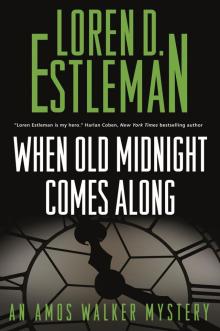 When Old Midnight Comes Along
When Old Midnight Comes Along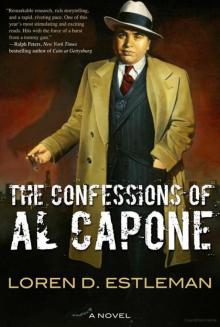 The Confessions of Al Capone
The Confessions of Al Capone The Wolfer
The Wolfer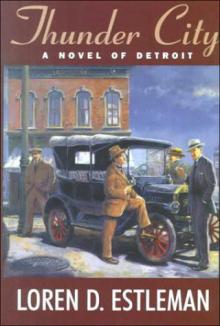 Thunder City
Thunder City Loren D. Estleman - Valentino 01 - Frames
Loren D. Estleman - Valentino 01 - Frames Stamping Ground
Stamping Ground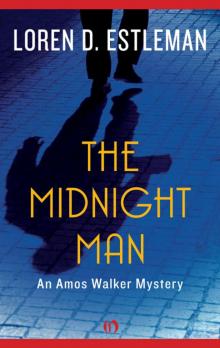 Midnight Man
Midnight Man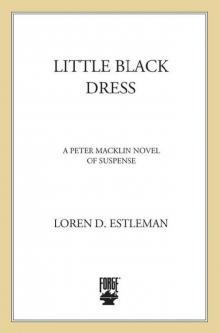 Little Black Dress (Peter Macklin Novels)
Little Black Dress (Peter Macklin Novels) Loren D. Estleman - Amos Walker 16 - Poison Blonde
Loren D. Estleman - Amos Walker 16 - Poison Blonde Brazen
Brazen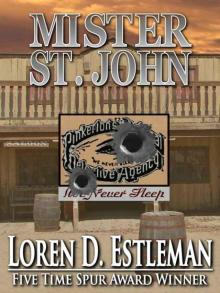 Mr. St. John
Mr. St. John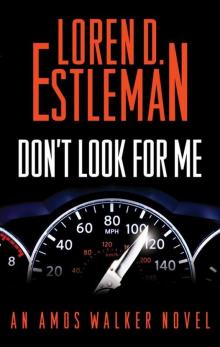 Don't Look for Me: An Amos Walker Novel (Amos Walker Novels)
Don't Look for Me: An Amos Walker Novel (Amos Walker Novels)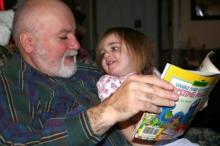 Stress
Stress Sugartown
Sugartown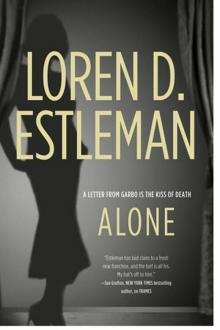 Loren D. Estleman - Valentino 02 - Alone
Loren D. Estleman - Valentino 02 - Alone Sweet Women Lie
Sweet Women Lie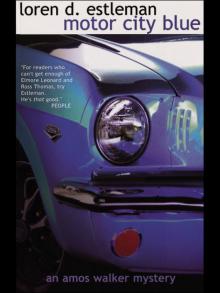 MOTOR CITY BLUE
MOTOR CITY BLUE The Perils of Sherlock Holmes
The Perils of Sherlock Holmes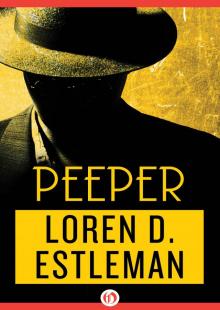 Peeper
Peeper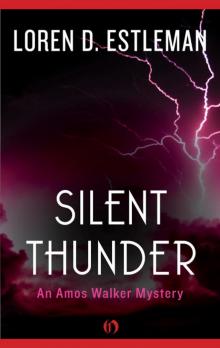 Silent Thunder
Silent Thunder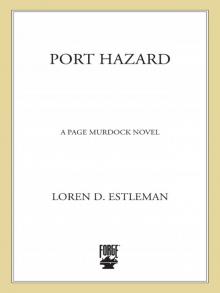 Port Hazard
Port Hazard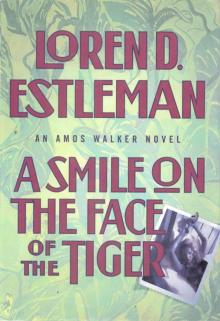 A Smile on the Face of the Tiger
A Smile on the Face of the Tiger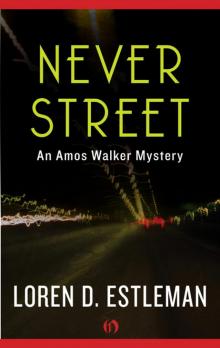 Never Street
Never Street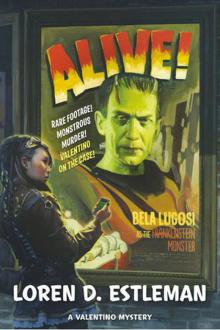 Loren D. Estleman - Valentino 03 - Alive!
Loren D. Estleman - Valentino 03 - Alive!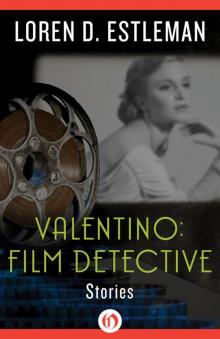 Valentino: Film Detective
Valentino: Film Detective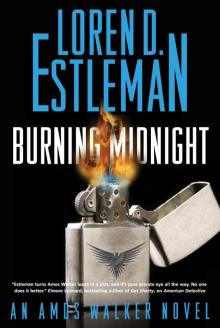 Burning Midnight
Burning Midnight Frames
Frames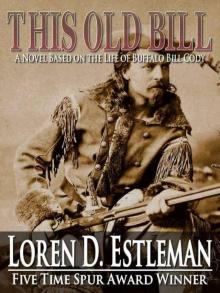 This Old Bill
This Old Bill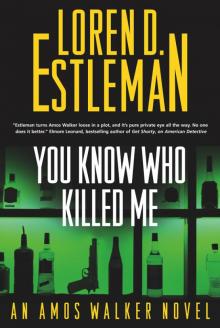 You Know Who Killed Me
You Know Who Killed Me Ragtime Cowboys
Ragtime Cowboys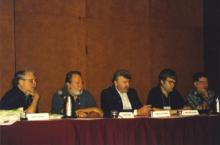 Edsel
Edsel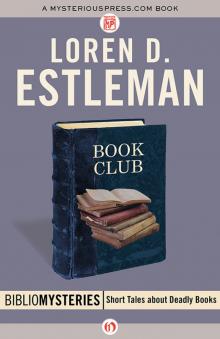 Book Club
Book Club Alive!
Alive!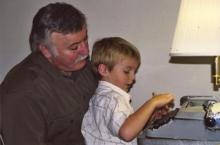 Whiskey River
Whiskey River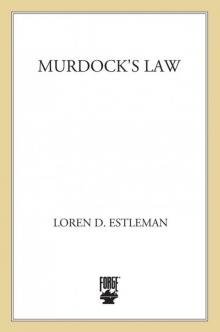 The Murdock's Law
The Murdock's Law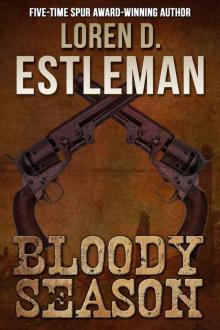 Bloody Season
Bloody Season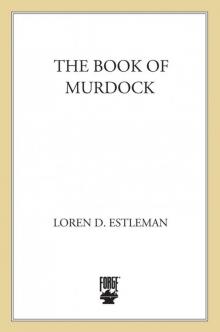 The Book of Murdock
The Book of Murdock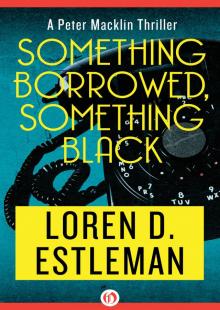 Something Borrowed, Something Black
Something Borrowed, Something Black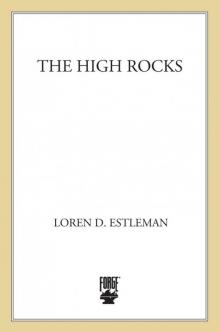 The High Rocks
The High Rocks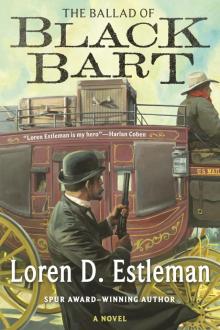 The Ballad of Black Bart
The Ballad of Black Bart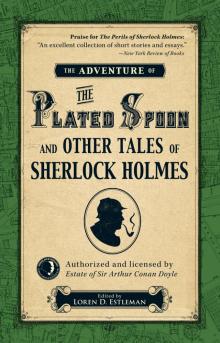 The Adventure of the Plated Spoon and Other Tales of Sherlock Holmes
The Adventure of the Plated Spoon and Other Tales of Sherlock Holmes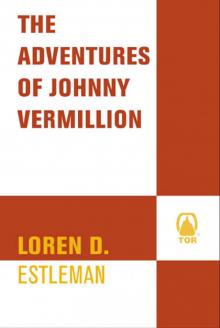 The Adventures of Johnny Vermillion
The Adventures of Johnny Vermillion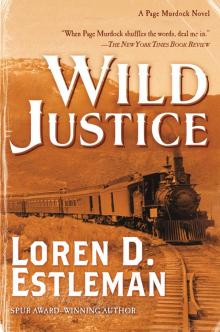 Wild Justice
Wild Justice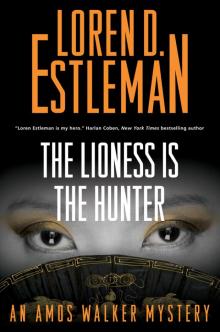 The Lioness Is the Hunter
The Lioness Is the Hunter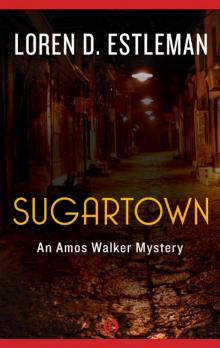 Sugartown: An Amos Walker Mystery (Book Five)
Sugartown: An Amos Walker Mystery (Book Five) Cape Hell
Cape Hell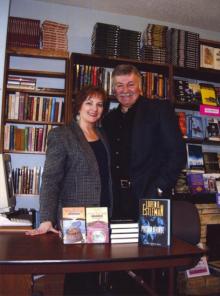 Downriver
Downriver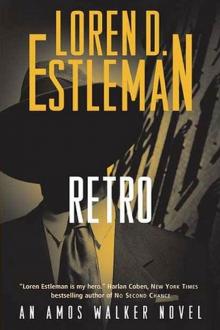 Loren D. Estleman - Amos Walker 17 - Retro
Loren D. Estleman - Amos Walker 17 - Retro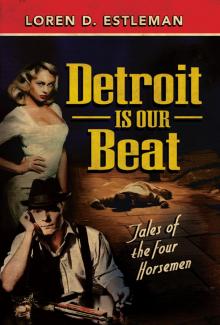 Detroit Is Our Beat
Detroit Is Our Beat Jitterbug
Jitterbug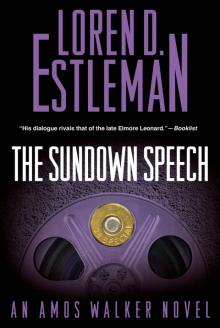 The Sundown Speech
The Sundown Speech Loren D. Estleman - Amos Walker 21 - Infernal Angels
Loren D. Estleman - Amos Walker 21 - Infernal Angels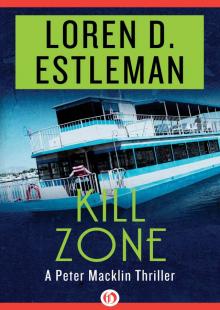 Kill Zone
Kill Zone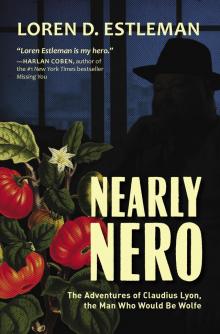 Nearly Nero
Nearly Nero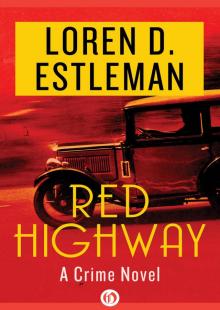 Red Highway
Red Highway American Detective: An Amos Walker Novel
American Detective: An Amos Walker Novel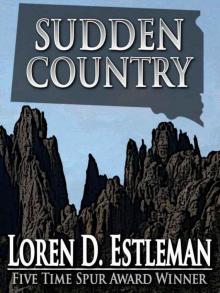 Sudden Country
Sudden Country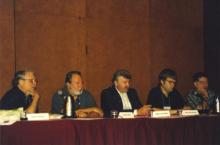 King of the Corner
King of the Corner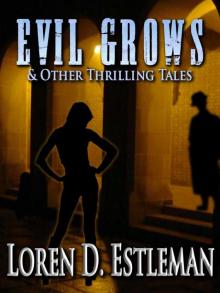 Evil Grows & Other Thrilling Tales
Evil Grows & Other Thrilling Tales Aces & Eights
Aces & Eights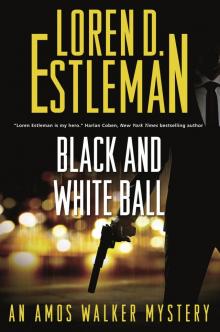 Black and White Ball
Black and White Ball The Hider
The Hider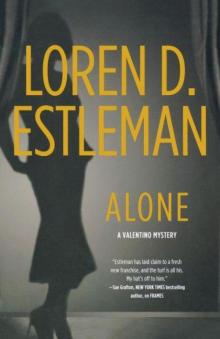 Alone
Alone Amos Walker: The Complete Story Collection
Amos Walker: The Complete Story Collection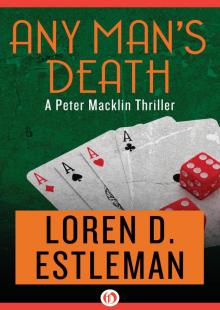 Any Man's Death
Any Man's Death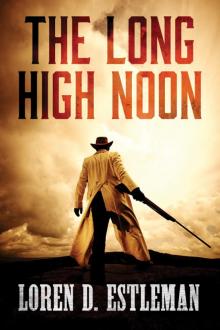 The Long High Noon
The Long High Noon The Witchfinder
The Witchfinder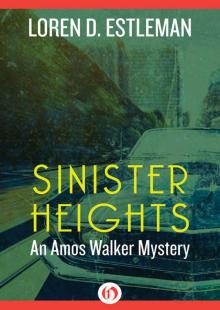 Sinister Heights
Sinister Heights City of Widows
City of Widows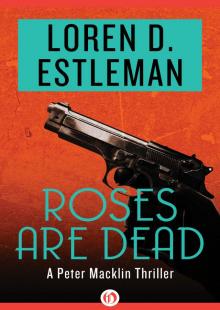 Roses Are Dead
Roses Are Dead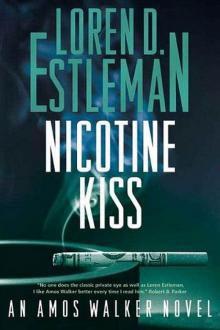 Loren D. Estleman - Amos Walker 18 - Nicotine Kiss
Loren D. Estleman - Amos Walker 18 - Nicotine Kiss